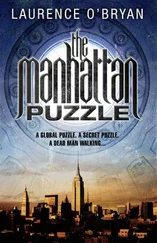Laurence Janifer - The Neander Ifrit
Здесь есть возможность читать онлайн «Laurence Janifer - The Neander Ifrit» весь текст электронной книги совершенно бесплатно (целиком полную версию без сокращений). В некоторых случаях можно слушать аудио, скачать через торрент в формате fb2 и присутствует краткое содержание. Год выпуска: 1995, Издательство: Dell Magazines, Жанр: Фантастика и фэнтези, на английском языке. Описание произведения, (предисловие) а так же отзывы посетителей доступны на портале библиотеки ЛибКат.
- Название:The Neander Ifrit
- Автор:
- Издательство:Dell Magazines
- Жанр:
- Год:1995
- ISBN:нет данных
- Рейтинг книги:3 / 5. Голосов: 1
-
Избранное:Добавить в избранное
- Отзывы:
-
Ваша оценка:
- 60
- 1
- 2
- 3
- 4
- 5
The Neander Ifrit: краткое содержание, описание и аннотация
Предлагаем к чтению аннотацию, описание, краткое содержание или предисловие (зависит от того, что написал сам автор книги «The Neander Ifrit»). Если вы не нашли необходимую информацию о книге — напишите в комментариях, мы постараемся отыскать её.
The Neander Ifrit — читать онлайн бесплатно полную книгу (весь текст) целиком
Ниже представлен текст книги, разбитый по страницам. Система сохранения места последней прочитанной страницы, позволяет с удобством читать онлайн бесплатно книгу «The Neander Ifrit», без необходимости каждый раз заново искать на чём Вы остановились. Поставьте закладку, и сможете в любой момент перейти на страницу, на которой закончили чтение.
Интервал:
Закладка:
The Neander Ifrit
by Laurence M. Janifer

Illustration by William R. Warren, Jr
Dear Stan [1] Stanley Schmidt was editor of Analog Science Fiction and Fact at the time of this story’s publication. (Note of scanner)
:
This may be a long sort of letter, so sit back.
New York (to start where everything starts) is a very strange place, and commuters like you never really get to know it. The place has everything, including a pile of stories that are flatly unbelievable; if I told you about Little North Evans Boulevard, for instance, you’d accuse me of inventing the whole thing, and there are even people who refuse to believe that there is a spot in Manhattan where Waverly Place crosses Waverly Place and goes charging off in all directions, as the man said—and they can see that one for themselves. All you have to do is find Sixth Avenue (which is easier to do if you remember not to call it Avenue of the Americas) and where it crosses Waverly Place walk west along Waverly, and when you come to the old Infirmary you’re there. The sight left a permanent neurosis in an old friend of mine, I’m afraid, who happened across it one very drunken night.
And of course the town has a positive farrago of Institutions of Learning, from Columbia and Pace and God knows what-all to, say, the State University of New York (SUNY) and the City University of New York (CUNY), the whole rickety pile of them teaching God knows what to God knows how many eager young minds. There’s one more institution, I find—whose computer is really responsible for this letter, I suppose. I’ve just run into the Local University of New York (LUNY).
LUNY is a private university—very private. They don’t want any sort of government funds, being a little afraid that the government would then jump in and tell them what to do, which textbooks to use, and so on; as it is, they may be the only university anywhere that uses Alice’s Adventures in Wonderland and Through the Looking-Glass as primary math texts, and Gordy Dickson’s Dorsai novels as basic sociology’. They want no interference, and my guess is that, if government were allowed in, they’d have some.
LUNY has a lot of ties to science-fiction, come to think of it, not the least of which is that the place sounds like science-fiction. They’ve only been open twelve years so far, but some of their early graduates have already found places for themselves in private industry; that plan to bury people in space and sell advertising linage on their coffins, if I have it right, was a LUNY project.
And, as I say, it’s their computer that is at the root of all this. I ran into it because I was fiddling with an amok-computer story, and ran into a very full professor at an Italian place over here on the Medium West Side (I think New York may have more Italian restaurants than Florence, though I am certainly not going to go there and check), and he talked things over with me the next day in his offices, inside the LUNY Main Building. (By the way—they’re keeping the computer sort of quiet so far, and I hope this letter doesn’t injure that privacy any—but what the hell, it’s just between the two of us, right?)
Part of the computer—what they call the interactive array—is named Daisy (because the name occurs in “A Bicycle Built for Two”, though it is not, damn it, the name of the bicycle), since the computer is built around the idea of two full cycles. That is, every operation goes through two cycles, with a third cycle (which the computer-lab people here have christened the Training Wheels) on call in case of disagreement.
Yes, I know: nearly all computers have an I-tell-you-three-times system, more or less. This is something else. Every operation goes through two such triple plays, and maybe a third, with each individual sheaf of commands checked at interruption points. It slows things down some, though not as much as you’d think because some radically new notions are a part of the configuration, but it does, they tell me, give added assurance and added power somehow or other.
The computer as a whole doesn’t seem to have a name, and so far has refused to accept one. Whether or not the thing is alive or conscious has been the subject of several ongoing LUNY investigations, and two honors courses, and I’ll keep you posted. But it is certainly the damnedest thing of its kind I have ever run across.
It keeps reminding me of a phrase from one of those novels Fred Pohl and Cyril Kornbluth wrote back in the Peculiar Old Days—the one set in a low-calorie society (which is an exact description) and involving a heroic group called Sons of the Wolf, which I assume was their way of getting Sons of Bitches past what censorship then existed.
This low-calorie society was full of people who meditated, and the prize form of meditation was “meditation on connectivity.” This made a certain amount of sense in the novel, and it makes much more sense if applied to the LUNY computer, because Connectivity, so to speak, is most of its business.
It’s set up to connect every fact it’s ever been fed with every other fact it’s ever been fed, which makes for a total number of connections that staggers the mind. Anyhow, it staggers mine, though as I grow older I find I stagger more easily. There did come a point at which the sheer number of discrete connections started the computer losing information (go see a topologist if you don’t believe me; what do you think I’m doing, making stuff up here?), but by treating the information in ad hoc bunches for purposes of preliminary definable connection they got things back into what they apparently think of as line. And as the LUNY staff has fed the computer every datum a wildly assorted staff could get its hands on (including fiction—so labeled—music, paintings and sculptures as encoded systems, and dictionaries in 170 languages, give or take a dialect) it is making a very great many connections by now.
Their idea is, of course, that material in one area can contribute to work in a whole different area—not exactly a novel notion, but they’re leaning on it a little. I asked my tame professor for an example, and he said that material common to the manufacture of shatterproof glass, the understanding of cattle stampedes, and some oddities involving fractured spines in camels is about to make a breakthrough in that grey area between the quantum-physics world and the Newtonian world in which all of us used to live so happily. I’ll write you more about that when I understand it a little better. But the report for the moment starts with all those dictionaries the thing has digested.
It seems (according to the computer) that all known languages do have a few big things in common, though some languages have tried to eradicate these ancient influences. The fact that German has no nonsense words (I mean no deliberate nonsense words), says Daisy, is evidence that German is one such language. Don’t ask me, for heaven’s sake.
I actually talked to Daisy, of course—the interactive array—in her office, down in a sub-basement of the Main Building. (Incidentally, everything is in the Main Building, because LUNY only has the one building, though it is a large one; it was named after a Charles Freidrich Main, and if I ever find out who he is or was I’ll tell you.) Daisy insists that there are common sub-roots in all languages, that provide a sort of Rosetta Stone not only for written language in general but—and very specifically—for hieroglyphic writing and picture-writing in particular.
Читать дальшеИнтервал:
Закладка:
Похожие книги на «The Neander Ifrit»
Представляем Вашему вниманию похожие книги на «The Neander Ifrit» списком для выбора. Мы отобрали схожую по названию и смыслу литературу в надежде предоставить читателям больше вариантов отыскать новые, интересные, ещё непрочитанные произведения.
Обсуждение, отзывы о книге «The Neander Ifrit» и просто собственные мнения читателей. Оставьте ваши комментарии, напишите, что Вы думаете о произведении, его смысле или главных героях. Укажите что конкретно понравилось, а что нет, и почему Вы так считаете.












